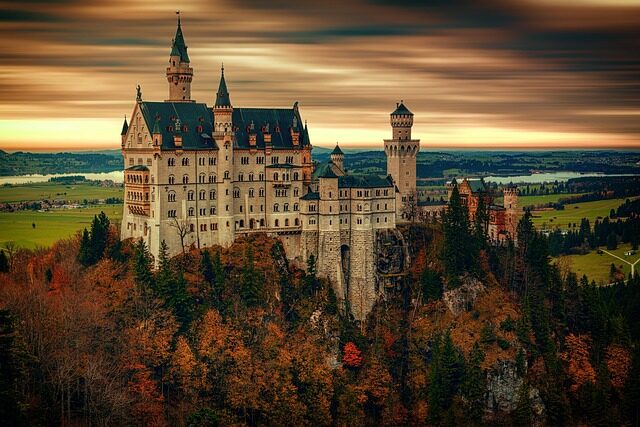The history of Northern Europe is deeply marked by the reigns of the Scandinavian medieval kings, whose legacies and influences have transcended the ages. From the legendary Yngling dynasty to the establishment of significant kingdoms, these rulers have shaped the political, cultural, and social landscapes of Scandinavia.
These kings were more than just rulers; they were symbols of power and cultural icons, whose stories and myths still resonate today. The line between historical fact and mythical tales is often blurred, creating a rich tapestry of Scandinavian heritage that continues to intrigue scholars and history enthusiasts alike.
- What were the major dynasties of Scandinavian medieval kings?
- Who were the most influential kings in Scandinavian history?
- How did Viking kings shape the Nordic regions?
- What is the significance of the Yngling dynasty?
- Which kings established the Kingdom of Norway?
- What were the major events during the Viking Age?
- How did Norse mythology influence Scandinavian kings?
- What were the major dynasties of Scandinavian medieval kings?
- Who were the most influential kings in Scandinavian history?
- How did Viking kings shape the Nordic regions?
- What is the significance of the Yngling dynasty?
- Which kings established the Kingdom of Norway?
- What were the major events during the Viking Age?
- How did Norse mythology influence Scandinavian kings?
What were the major dynasties of Scandinavian medieval kings?
The tales of Scandinavian medieval kings are intertwined with the rise and fall of great dynasties. The Ynglings, the Skjöldungs, and the House of Knýtlinga each played pivotal roles in shaping the region’s history.
These dynasties governed through periods of immense change, including the Migration and Vendel eras. They paved the way for the structured monarchies that would emerge during the medieval period and were often claimed to have divine origins, further cementing their influence over their subjects.
The political evolution of Scandinavia can be traced back to the complex relationships between these ruling families. Their legacies are not just recorded in historical texts but also vividly depicted in the sagas and oral traditions passed down through generations.
Who were the most influential kings in Scandinavian history?
Within the annals of history, certain Scandinavian medieval kings stand out for their remarkable contributions. King Harald Fairhair, for instance, was pivotal in the founding of the Kingdom of Norway. His achievements set the stage for future monarchs, such as Haakon Haakonsson, who expanded Norway’s influence dramatically.
Further east, Eric the Victorious is remembered as the first historically recognized king of Sweden, and his reign marked the beginning of a more unified Swedish monarchy. These rulers not only consolidated power but also propelled their kingdoms into international prominence through trade, exploration, and warfare.

Their stories, often embroidered with the threads of legend and myth, continue to shape the understanding of Scandinavian identity and its royal history.
How did Viking kings shape the Nordic regions?
The Viking Age was a transformative period in Nordic history, largely due to the impact of Viking kings on society. These monarchs were not only fierce warriors but also shrewd politicians and explorers whose actions reverberated across Europe and even into the New World.
Viking kings such as Ragnar Lothbrok, whether more legend than fact, and historical figures like Harald Bluetooth greatly expanded the influence of the Nordic regions. Their reigns saw the establishment of trade routes, settlements, and political structures that would define the Nordic countries for centuries to come.
It was also a time of cultural exchange and adaptation, with Viking kings adopting Christianity while also leaving their own mark on the religion and the territories they encountered.
What is the significance of the Yngling dynasty?
The Yngling dynasty holds a special place in Scandinavian history as it represents the melding of myth and reality. Said to be descended from the gods, with Yngvi-Frey often cited as the founder, the Ynglings were considered the oldest known Scandinavian dynasty.
Their legacy is deeply entrenched in the very identity of the region. As rulers of Uppsala and other significant territories, the Ynglings are a testament to the enduring connection between Norse mythology and the historical narrative of Scandinavian monarchy.
Their deeds and lineage have been immortalized in the Icelandic sagas, illustrating the profound impact these semi-mythical kings had on the cultural consciousness of Scandinavia.

Which kings established the Kingdom of Norway?
The formation of the Kingdom of Norway can be attributed to a handful of ambitious and strategic rulers. Harald Fairhair is often celebrated as the first king to unite Norway into one kingdom after the Battle of Hafrsfjord.
Subsequent kings continued to solidify this unification, with figures like Olaf Tryggvason and Olaf Haraldsson, later known as St. Olaf, strengthening the country’s Christian foundations. King Haakon Haakonsson played a significant role in the kingdom’s golden age, with his reign seeing the flourishing of arts and a significant expansion of Norwegian territory.
These rulers were instrumental in transitioning Norway from a patchwork of petty kingdoms to a substantial medieval state with a lasting legacy.
What were the major events during the Viking Age?
The Viking Age was punctuated by numerous significant events that have shaped the historical narrative of Scandinavia. Among these were:
- The raids on monasteries such as Lindisfarne, which marked the beginning of Viking expansion
- The establishment of the Danelaw in England, where Viking laws and customs held sway
- The foundation of cities like Dublin and York by Viking settlers
- The discovery of Greenland and Vinland (North America) by Norse explorers
This era was a crucible of change, with voyages and conquests creating a network of influence that stretched across continents.
How did Norse mythology influence Scandinavian kings?
The legendary kings of Sweden and their stories are deeply entwined with Norse mythology. These kings often traced their lineage to the gods themselves, seeking to legitimize their rule and establish their divine right to lead.
Mythological figures such as Odin, Thor, and Freyr were not merely deities but also represented qualities that kings aspired to embody. Kings used these connections to garner respect, loyalty, and even fear among their subjects and enemies alike.

Norse rituals and religious practices also played a significant role in the governance of these medieval states, further illustrating the symbiotic relationship between myth and monarchy in the Viking era.
For a deeper dive into the legacy of these kings, take a look at this fascinating exploration of Viking rulers:
In conclusion, the medieval kings of Scandinavia cast long shadows over the history and culture of Northern Europe. Their reigns, often straddling the line between history and legend, continue to captivate and inspire, as their deeds, both real and mythologized, remain a testament to the rich heritage of the Nordic regions.

